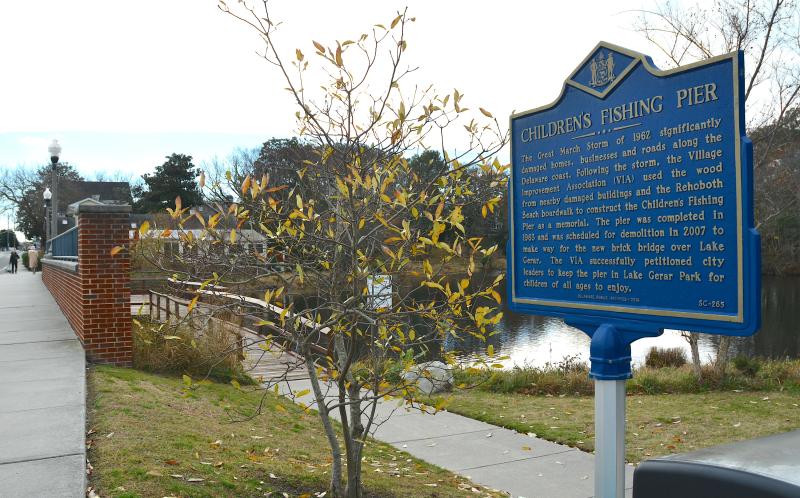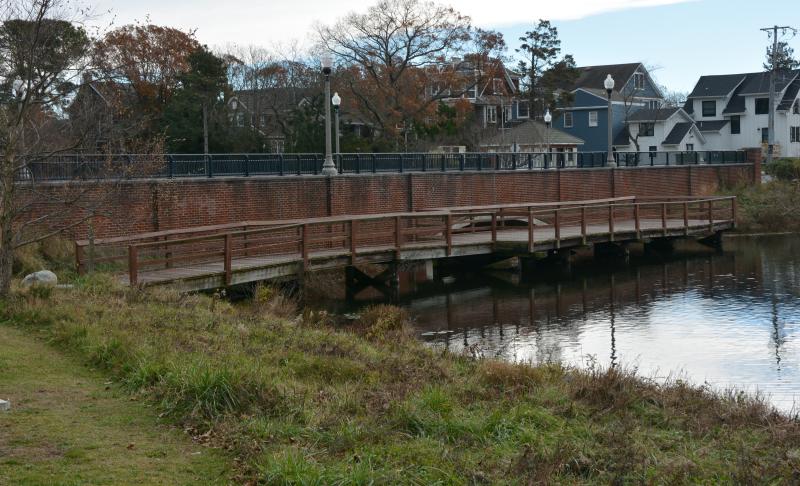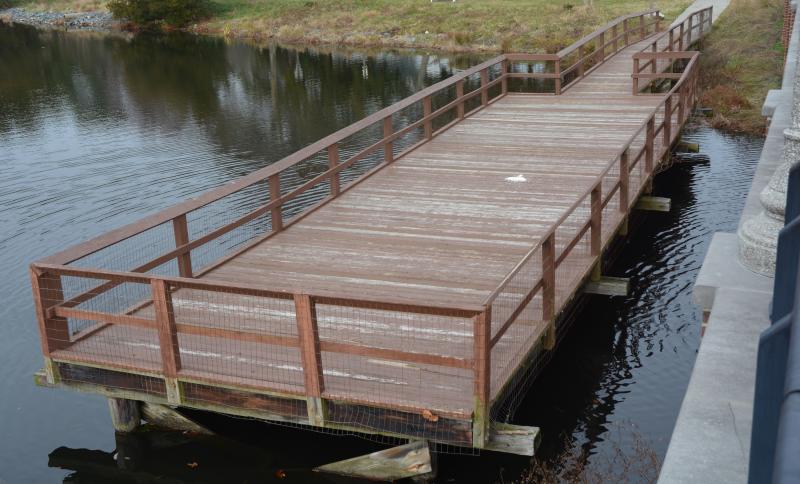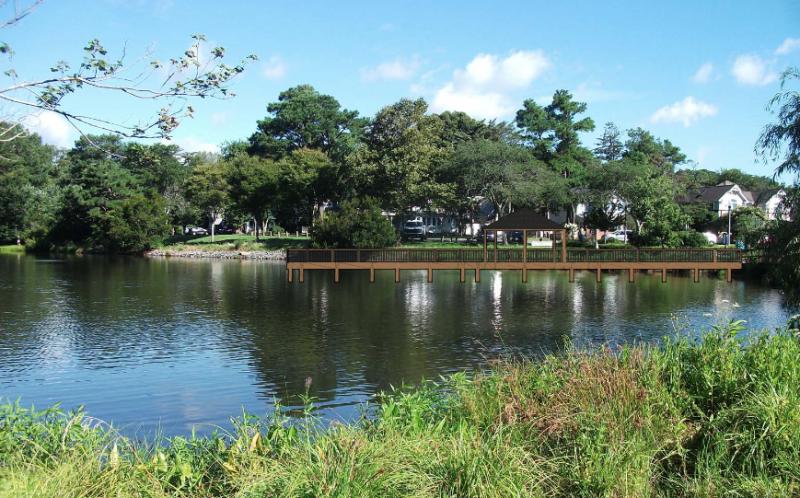Rehoboth exploring replacement of Lake Gerar fishing pier
Spurred by an anonymous donor who has indicated a willingness to fund a significant portion of the project, Rehoboth Beach has begun exploring the replacement of the Children’s Fishing Pier on Lake Gerar.
The Village Improvement Association, a part of the General Federation of Women’s Clubs and founded in Rehoboth Beach in 1909, built the pier after the Storm of ‘62, using large pieces of timber left in the storm’s wake.
During a commissioner workshop Dec. 4, VIA President Kate McKenzie said someone who had spent his whole life fishing on the pier approached the association about a donation to fix it.
Soon afterward, the association contacted the city, and a structural analysis was conducted. The analysis showed that if the pier is improved, it should be replaced, said Interim City Manager Evan Miller.
Bob Palmer, Beacon Engineering senior engineer, conducted the structural evaluation and has been working on possible designs.
Beginning with the existing conditions, Palmer said, the structure is no longer square. She said there’s a lean to the pilings, the decking doesn’t appear to be attached to the pilings, and it doesn’t meet current ADA standards. It’s unknown if the structure has settled into place or if it’s continuing to move, he said.
Regardless of what gets done, Palmer recommended no more than 25 people stand on the pier at one time, and there be no unified movements, like an outdoor aerobics class, because that could lead to failure.
Moving on to design, as presented, Palmer said the new pier would be about 50% larger, and instead of running parallel with the vehicular bridge immediately to the east, the first half swivels to the west, connects with a gazebo and then has a second leg going farther into the lake.
One design had the second leg coming off the gazebo closer to the wooded peninsula on the western edge of the lake. Another design had the second leg coming off the gazebo but heading toward the shore on the north side of the lake.
Palmer said the gazebo would offer protection for pier users without being too obtrusive. The current proposal would be to allow use of the pier from dawn to dusk, and there would be no electricity, he said.
If properly maintained, the proposed pier could last 80 to 100 years, he said.
Commissioners expressed some concern about the design, viewshed and enforcing use, but generally acknowledged the pier has probably passed its expected lifespan. The big question on all the commissioners' minds is how much the donor is willing to donate.
McKenzie said the VIA doesn’t know a specific amount or if the city will be expected to contribute anything beyond future maintenance.
Moving forward, McKenzie and Palmer said they’ll be in contact with the donor soon to figure out exactly what he’s willing to fund, create more official building documents and then come back to commissioners in February for more discussion.
If everything goes well, Palmer said, the permitting process could begin as early as March. However, it could still be years before the pier is built due to a lengthy permitting process, he said.

Chris Flood has been working for the Cape Gazette since early 2014. He currently covers Rehoboth Beach and Henlopen Acres, but has also covered Dewey Beach and the state government. He covers environmental stories, business stories and random stories on subjects he finds interesting, and he also writes a column called Choppin’ Wood that runs every other week. Additionally, Flood moonlights as the company’s circulation manager, which primarily means fixing boxes that are jammed with coins during daylight hours, but sometimes means delivering papers in the middle of the night. He’s a graduate of the University of Maine and the Landing School of Boat Building & Design.























































